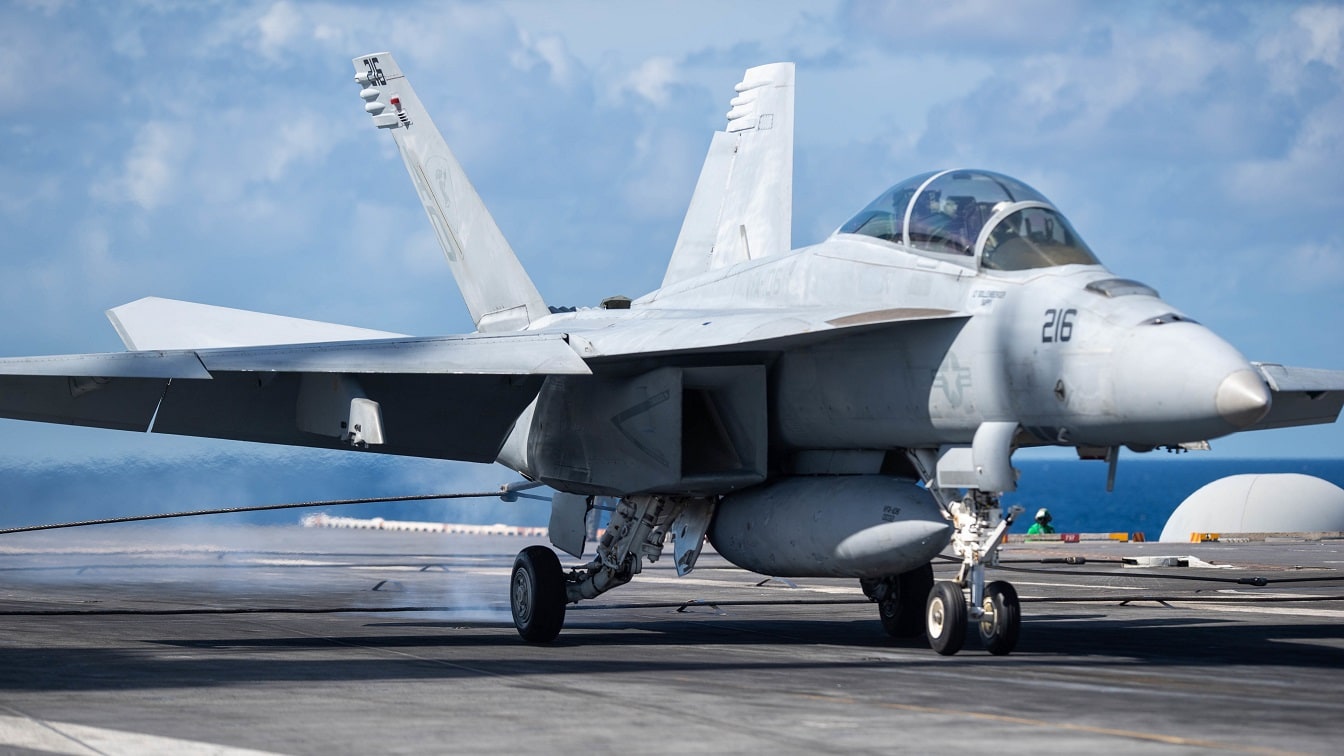The US Navy: Can Aircraft Carriers Fight a War Against Russia and China? – The US Navy just released its vision for a future aircraft carrier air wing a decade from now to make sure American aircraft carriers can still compete with China.
The recently released “Navy Aviation Vision 2030-2035” emphasizes the need to win in the great power competition with Russia and especially China, which is rapidly modernizing its military.
The Navy warns in its report that the strategic environment and maritime warfare are changing and that by the early 2030s, the sea service will face a larger Chinese carrier force and greater numbers of far more capable Chinese aviation assets, among other threats.
China today has two aircraft carriers with a third under construction. The newest carrier is expected to be the country’s first modern flattop, equipped with catapults and other improvements that will allow China to field a more diverse air wing and make it a more formidable combat asset than its predecessors.
Not only is China building what appear to be better carriers, but the country is also developing a fifth-generation carrier-based fighter to augment or replace the Chinese People’s Liberation Army Navy’s fourth-generation J-15s.
The US has already started fielding fifth-generation fighters on its aircraft carriers. USS Carl Vinson deployed in August with a squadron of F-35C Lightning II Joint Strike Fighters, becoming the first US aircraft carrier to deploy with the fifth-gen stealth jets.
But most US Navy carrier air wings continue to consist of F/A-18E/F Super Hornets, EA-18G Growler electronic warfare aircraft, and E-2 Hawkeye early warning aircraft. Carriers also employ rotary aircraft and supply planes.
The Navy explained in its recent report that “the Air Wing of the Future will be increasingly lethal, survivable, networked, sustainable, and unmanned with autonomous capabilities.”
Capability upgrades to the E-2 should allow it to continue to serve as the “quarterback” for the fleet, the EA-18G to deliver full-spectrum electronic warfare effects, and the F/A-18E/F to remain the “backbone” through the mid-2030s.
The Navy sees the F-35 augmenting both the Growlers and Super Hornets while also emerging as the Navy’s “strike platform of choice.”
The Super Hornet will eventually be phased out and replaced by the F/A-XX, the strike fighter component of the Next-Generation Air Dominance family of systems. Still in development, it presently exists only on paper.
The Navy said that analysis indicates this plane “must have longer range and greater speed, incorporate passive and active sensor technology, and possess the capability to employ the longer-range weapons programmed for the future.”
“The advanced carrier-based power projection capabilities resident in F/A-XX will maintain CVN relevance in advanced threat environments,” the Navy wrote in its recent report.
The Navy also wants manned/unmanned teaming as a tool for increased lethality. The Navy is working on using the MQ-25 Stingray tanker drone for aerial refueling and other systems for surveillance, but the Navy also envisions being able to have manned fighter aircraft, like the F/A-XX, operating unmanned assets as a quarterback in combat.
The sea service said that “the appropriate mix of F/A-XX, manned and unmanned platforms will be evaluated to ensure the most lethal and affordable CVW possible.”
The Navy argues that “it is evident we are facing a rapidly evolving threat requiring substantial force modernization.”
It stressed that making the changes to the force necessary to win “will require a renewed focus on the capabilities, capacity, readiness, and training the Navy needs to improve and sustain our warfighting advantage.”
Ryan Pickrell is a senior military and defense reporter at Business Insider, where he covers defense-related issues from Washington, DC.

